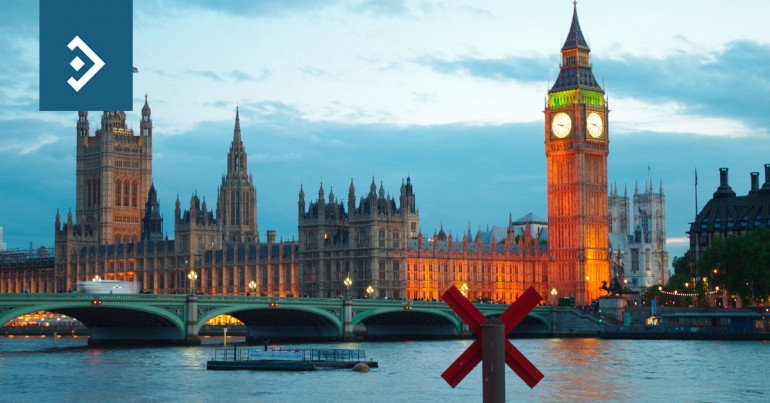
Bank of England set to hike again
Morning mid-market rates – The majors
3rd November: Highlights
- How much further will interest rates rise?
- 2 in 3 votes believe a recession is on the way
- ECB helpless as activity goes into free-fall
GBP – Bailey may give forward guidance on rates
With consumer prices hitting 10.1% in September, the tactic of hiking by bigger increments is still open to question. The widespread belief is that once rates reach neutral and move into restrictive territory, their effect on demand will become exponentially greater.
However, that idea is not universally accepted as the cause of the rise in inflation is not driven purely by supply and demand or any particular asset bubble.
The amount of money in the system following the relief provided to households during the Pandemic is one factor that rate hikes won’t affect, as is the rise in energy prices.
While it is the demand for gas that is driving inflation higher, that level of demand has been limited by the rise in prices that is driven by outside influences.
As part of a possible new austerity package of measures to be announced by the Chancellor of the Exchequer on November 17th, it is rumoured that the Cabinet is considering suspending its commitment to foreign aid.
While this is likely to be welcomed by the Right wing of the Party, the United Nations believes that it could contravene international human rights commitments.
The most significant question relating to reducing the £40 billion hole in its public finances is how it can be achieved without a package of austerity measures that drive domestic poverty.
It seems that the previous administration’s rush for growth by lowering the overall tax burden will be abandoned and net taxes will rise.
Food inflation continues to rise, reaching its highest rate on record last month, as the price of many staples led to an increase to 11.6%.
As much as the actual announcement of the hike will affect the market, many commentators will await Andrew Bailey’s view on future hikes when he holds a press conference following the MPC meeting.
He faces the prospect of further significant rises in interest rates as inflation is set to continue to rise. The housing market already saw its first decline in fifteen months last month, and that is likely to accelerate as the Bank tightens monetary policy further.
The pound fell to a low of 1.1387 and closed at 1.1392 yesterday as traders expressed their concerns that the Bank of England risks driving the economy into a period of stagflation that it will be difficult to escape from.
Recommend our services and earn up to £75 per successful referral
USD – Future hikes to take account of cumulative tightening
On the one hand, he commented that the Central Bank might need to continue to hike short-term interest rates into the New year to defeat inflation. At the same time, he spoke of considering the cumulative effect of hikes that have already taken place.
Overall, the market took Powell’s remarks as the first sign of a crack in his resolve to overcome rising inflation.
Analysts are still undecided about the prospects of a recession hitting the economy sometime in the first quarter of the New Year, but with midterm elections due to be held next week, three in four voters believe that the economy will contract next year, which is potentially unwelcome news for the Democrats.
The bogeyman of U.S. Politics, Donald Trump, appears to have the Republican Party in his grasp as candidates in several key states have received campaign donations from the former President.
The rumblings from the Presidential election continue to drive conspiracy theories in a few states. President Biden tried to head off any further controversy yesterday as he warned that any defeated candidates who question the validity of the voting process would be entering a cul-de-sac.
As in any democracy, the party in power is extolling the virtues of its time in office while the opposition is questioning its record in several areas.
The economy is still the number one topic of conversation, and questions for Republicans concerning Biden’s record are met with retorts about the situation he inherited.
The market will now have to wait six weeks for the minutes of yesterday’s meeting to be published to find out how heated the discussion became and whether it was the full and frank exchange of views expected of Fed Governor Christopher Waller.
The dollar index did not react to the fourth consecutive seventy-five basis point hike, with traders in receipt of detailed advance guidance. Their attention is already turning to Friday’s publication of the October employment for further clues on the Feds’ intentions.
Given the hike which took place yesterday, a relatively strong headline number for new jobs created is expected.
The dollar index rose to a high of 112.15 in the aftermath of the Fed announcement but looks far from solid at such advanced levels.
EUR – Rates will continue to rise until target is reached
The European Central Bank is now fully committed to lowering inflation using all the available tools.
This could mean that the recession already knocking at the door of several Eurozone members could be deeper and longer lasting than it would have otherwise been.
Instead of loosening monetary policy to drive growth, the Central Bank is still in restrictive mode despite the current level of interest rates now, yet having moved out of the accommodative phase which has existed since the beginning of the Pandemic.
Even Lagarde, who has been the arch-denier of an impending recession, admitted this week that the ECB’s policies had increased the likelihood of the Eurozone economy contracting in 2023.
Data is now predicting a significant slowdown in activity. The publication yesterday of Manufacturing PMI still shows that output is contracting. While only falling marginally from 46.6 to 46.4, the activity remained sluggish.
Unemployment data which has begun to weaken after posting some solid numbers in the first two quarters have begun to weaken will be published later today.
It is expected that for the entire Eurozone, the unemployment rate will remain at 6.6%
There are several members of the Governing Council of the ECB making speeches today, with Lagarde likely to steal the limelight, although no one expects her to shed any further light on how long she expects to have to continue to tighten monetary policy.
The single currency is in a tough trend for now. It is entrenched below parity with the dollar. But traders would like to see a little more strength in order to sell, which the few bulls who still exist feel that it is too high to buy currently.
The euro mirrored the movement of the dollar following the Fed announcement. It had hung on to the 0.9890 area, but the 75-basis point hike by the FOMC drove it to a low of 0.9813 and closed at 0.9818.
Alan Hill
Alan has been involved in the FX market for more than 25 years and brings a wealth of experience to his content. His knowledge has been gained while trading through some of the most volatile periods of recent history. His commentary relies on an understanding of past events and how they will affect future market performance.



